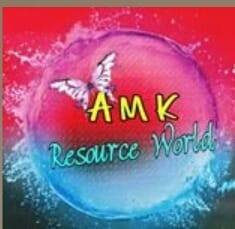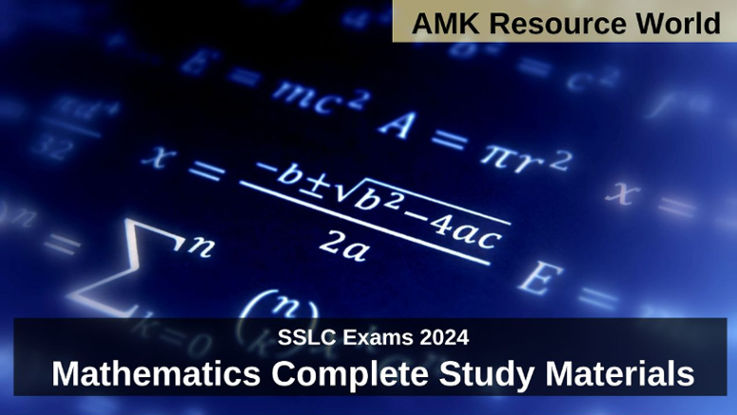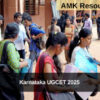-
Essays on Current topics (Vol 1)
-
Ancient Names
-
Courts in India
-
Diseases & Causative agents
-
Facts about India
-
Foreign Invaders in India
-
Head Quarters of International Organisations
-
Indian Rivers and their Origins
-
Indian Rivers and their tributaries
-
Tribunals in India
-
Wars & Battles in India
-
Arjuna Awards
-
Branches of Science
-
Chief Ministers & Governors
-
Dronacharya Awards
-
First in India
-
Governor Generals & Viceroys
-
Important Days
-
India Missiles
-
Inventions & Discoveries
-
Power Plants
-
Rajiv Gandhi Khel Ratna Awards
| KNOWLEDGE HUB |
The imaginary sphere on the inner surface of which the celestial bodies appear to attach is called Celestial Sphere, The star nearest to the earth is Sun, The distance of sun from the earth is 5 x 108km, The time taken by a light from the sun to reach the earth is 3min, The mass of the sun is about 2 x 1030Kg, The surface temperature of sun is about 6000K, The total amount of energy radiated by the sun per second is called Solar luminosity, The solar luminosity of Sun is 9 x 1026W, The places in India where the two large telescopes are situated are Udaipur and Kodaikanal, The period of rotation of the sun is 26 days, The direction of rotation of the sun is from West to East,
The grain like pattern found on the photosphere of the sun are called Granulations, The thread like structures found on the surface of the sun are called Spicules, The short outbursts emerging from the solar surface are called Solar flares, The temperature of the region of sunspots is about 4000K, A display of streams of colored light seen in night sky in the polar regions of earth is called Aurora, The source of energy of the sun are Thermonuclear reactions, 1 light year is equal to 1016m, 1 parsec is equal to 26 light years, Stars differ in color due to difference in their temperature, The scale used to express the brightness of stars is Magnitude scale,
The magnitude of sun is -27, The magnitude of the moon is -13, The magnitude of the star Sirius is -1.4, The magnitude of the star Vega is 0, The magnitude difference of 1 is equal to the ratio of 5, The magnitude difference of 2 is equal to the ratio25, The magnitude difference of 3 is equal to the ratio 6, The magnitude difference of 4 is equal to the ratio 40, The magnitude difference of 5 is equal to the ratio 100, The value of luminosity of star depends upon the temperature and diameter of star,
The luminosity of star Sirius is 5Lo, The size of stars are determined from their luminosity and temperature, The galaxy next to the Milky way galaxy is Andromeda, The shape of the galaxy Andromeda is Spiral, The number of galaxies estimated to be present in the universe are 1011 million
FOR MORE e Books – SCROLL DOWN |
-
Socio religious reform movements
-
Minority Department & Schemes (Part 1)
-
Minority Department & Schemes (Part 2)
-
Science Bit Bank
-
Articles of Constitution of India
-
Bharath Ratna Awards
-
General Knowledge Q Bank
-
Indian Economy Q Bank
-
International Airpors in India
-
January 2018 Q Bank
-
Olympics
-
Assumptions and Statements
-
Conjunctions
-
Computer Shortcut Keys
-
Preposition
-
Question tag
-
Rhyming Words
-
Seating arrangement & Ranking
-
Coding and Decoding
-
Clocks and Calendar
-
Alphabet Series
-
Awards & Honours of 2017
-
Analogy
-
Non verbal Reasoning (Part 1)
-
Non verbal Reasoning (Part 2)
-
Non verbal Reasoning (Part 3)
FOR MORE e Books – SCROLL DOWN |
-
Non verbal Reasoning (Part 4)
-
Non verbal Reasoning (Part 5)
-
Analytical Reasoning
-
Logical Venn Diagrams
-
Mental Ability Formulae
-
States of India (Part 1)
-
States of India (Part 2)
-
States of India (Part 3)
-
World Organisations
-
International Organisations & Headquarters
-
Boundary Lines between countries
-
General Science
-
General Knowledge (Part 1)
-
General Knowledge (Part 2)
-
General Knowledge (Part 3)
-
General Knowledge (Part 4)
-
General Knowledge (Part 5)
-
General Knowledge (Part 6)
-
General Knowledge (Part 7)
FOR MORE e Books – SCROLL DOWN |
-
General Knowledge (Part 8)
-
General Knowledge (Part 9)
-
General Knowledge (Part 10)
-
General Knowledge (Part 11)
-
General Knowledge (Part 12)
-
General Knowledge (Part 13)
-
General Knowledge (Part 14)
-
General Knowledge (Part 15)
-
General Knowledge (Part 16)
-
General Knowledge (Part 17)
-
General Knowledge (Part 18)
-
General Knowledge (Part 19)
-
General Knowledge (Part 20)
-
General Knowledge (Part 21)
| Information You Should KNOW |
The stars twinkle due to reflection of light, The brightness of the stars vary due to distance of them, The period of revolution of the earth is 365 days, The period of rotation of earth is 24 hrs, The sun crosses the celestial equator 2 times in the course of a year, The biggest planet in the solar system is Jupiter, The planet nearest to the sun is Mercury, The constellation used to identify pole star is Ursa Major, The comet lies in the constellation Cassiopedia, The planet Saturn lies in the constellation Aquarious,
A month in the Indian lunar calendar system is divided into 2 Pakshas, If the half moon is visible in the Zenith in the morning it will be again visible in the evening in the zenith after 15 days, The phase of half moon is called quarter, The motion of the earth around the sun is called Annual motion, The points where the celestial equator and ecliptic meet are called Equinoxes, The imaginary circle in the sky representing the apparent path of the sun is called Ecliptic, The average distance of the planet Mercury from the sun is 39AU,
The average distance of the planet Mars from the sun is 52AU, The average distance of the planet Pluto from the sun is 81AU, The phases of moon are 4, The sun and the host of celestial objects revolving round it are together called Solar System, The total amount of energy emitted by a source in 1second is called Luminosity, The visible disc of the sun is called Photosphere , The layer of the sun lying just above the photosphere is called Chromosphere, The layer of the sun which is visible only during the total solar eclipse is called Corona,
The dark irregular patches on the surface of the sun are called Sun spots, The distance traveled by light in one year is called Light year, A system of stars comprising of hundreds or thousands of millions of stars held together by the force of gravity is called Galaxy, The branch of science that deals with the study of universe is called Cosmology, A celestial object in which the escape velocity is greater than the speed of light is called Black hole, The velocity of recession of a celestial body is proportional to its distance from the observer is called Hubble’s law,
The awesome explosion of the primordial fireball which marked the beginning of universe about 15-20 billion years ago is known as Big Bang
FOR MORE e Books – SCROLL DOWN |
-
Abbreviations and Acronyms
-
Indian National Movement
-
Awards and Honours
-
Noble Prize
-
Parts of Speech
-
Prefixes and suffixes
-
One Word Substitution
-
Indian Polity (Part 1)
-
Indian Polity (Part 2)
-
Indian Polity (Part 3)
-
Indian Polity (Part 4)
-
Indian Polity (Part 5)
-
Picture Analogies
-
National Parks in India
-
Wildlife Sanctuaries in India
FOR MORE e Books – SCROLL DOWN |
-
General Knowledge One Liners
-
Science One Liners (Part 1)
-
Science One Liners (Part 2)
-
Science One Liners (Part 3)
-
Science One Liners (Part 4)
-
Punctuations
-
Basic General Knowledge
-
Blood Relationship
-
Latest Heads of Offices
-
GK One Liners (Part 1)
-
GK One Liners (Part 2)
-
GK One Liners (Part 3)
-
GK One Liners (Part 4)
-
Analogies
-
Superlatives in India and World
-
Health Education
-
Memory Tips & Techniques
-
Methodology of Teaching English
-
Physics Facts
-
Degrees of Comparison
-
Figure of Speech
-
Basic Sciene Q Bank
-
Geography of India (Part 1)
-
Geography of India (Part 2)
-
Geography of India (Part 3)
-
Geography of India (Part 4)
-
Idioms & Phrases
-
Meanings of Difficult Words
-
Missing Numbers
-
Most often Confused Words
-
Number Series
-
Education New Initiatives
-
Fundamentals of Computer
-
Articles
-
35 Tips to Improve Memory
-
Child development & Pedagogy
-
Computer Abbreviations
-
Secret of Success
FOR MORE e Books – SCROLL DOWN |
-
Computer Q Bank (Part 1)
-
CTET (Sample Paper)
-
Fundamental Concepts of Geometry
-
Mathematics Formulae Hand Book
-
Methodology of teaching EVS
-
Tips for Success in College
-
Greatest Mathematicians
-
History of Computers
-
History of Psychology
-
Home made Remedies
-
Important Days in School
-
Important Essays
-
Indian Economy (Part 1)
-
Indian Economy (Part 2)
-
Indian Economy (Part 3)
-
List of Opposite Words
-
Psychological Terms
-
Currencies of World
-
Solar System
-
Census 2011
-
Continents of world
-
Countries & Parliament
-
Countries of World
FOR MORE e Books – SCROLL DOWN |
-
Economic Survey of India (2018)
-
Famous Sports Personalities
-
Five year Plans
-
National Birds
-
Union Budget of India (2018 – 19)
-
Books and Authors
-
Banking Terminologies
-
Political Parties in India
-
Buddhist Councils
-
Classical Dances of India
-
Committee & Commissions in India
-
Computer terms
-
Countries & National Sports
-
Dams & Reservoirs
-
Environment Movements in India
-
First in World
-
Folk Dances
-
Indus Valley sites & Discoveries
-
International Water treaties
-
Major tribes in India
-
Mountain Ranges in India
-
Secretary Generals of UNO
-
Sobriquets
-
Soils in India
-
Sports terminologies
-
Stadiums around world
-
Temples in India
-
Vitamins & Minerals
Keep visiting for Latest Updates







































